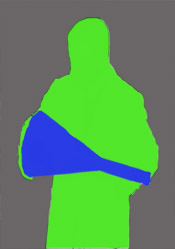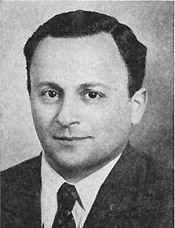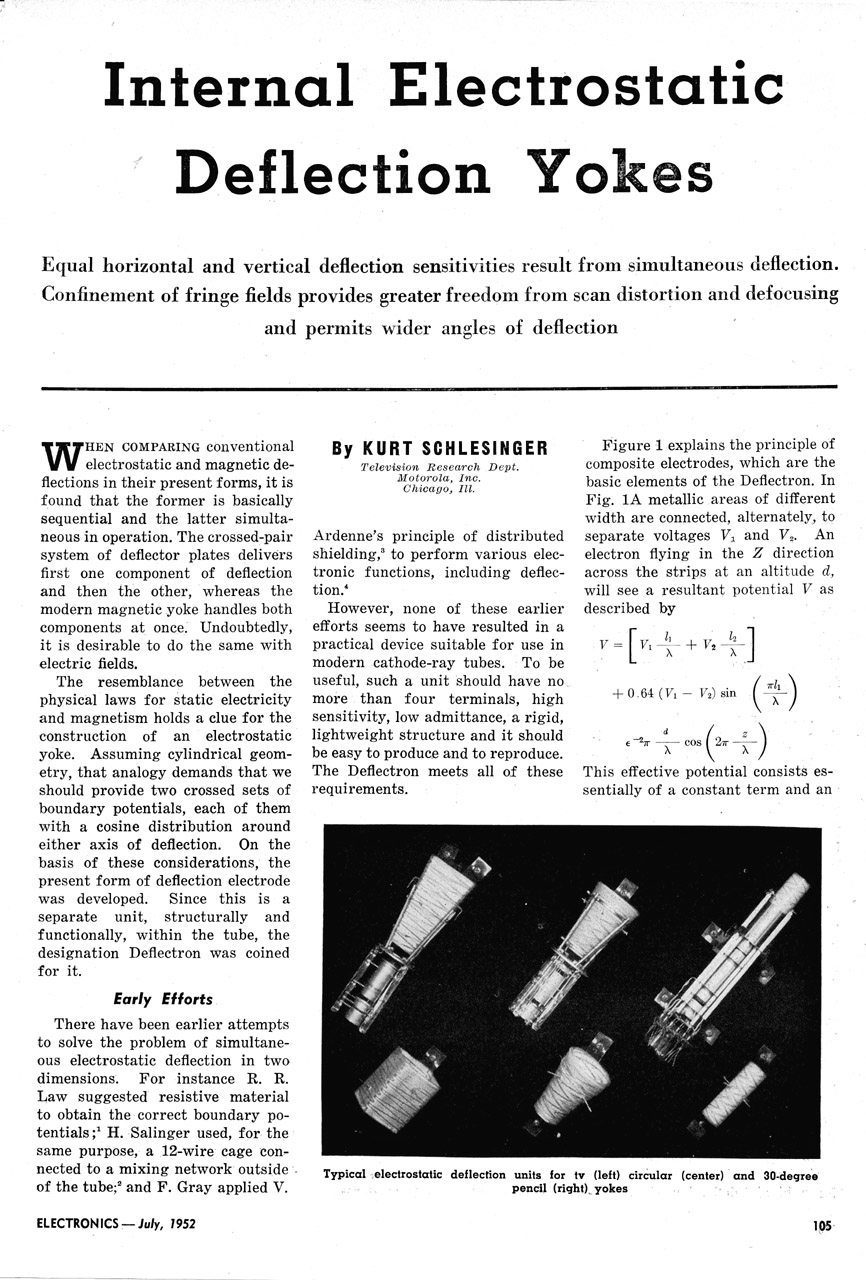The RCA Selectron -- The Deflectron

Photo of 4503 scan converter tube courtesy Giorgio Basile
Elegent in its simplicty and imaginitive in its mathematics the Deflectron structure developed by Dr. Kurt Schlesinger was seldom, with the exception being the Sony Trinicon vidicon, used in commercial applications:
The USSR had their ЛИ-471-3 vidicon; General Electric Company, Teltron Technologies, and General Electrodynamics Corporation also made focus -projection-scan (FPS) vidicons. Along with the Tektronix 7J20/J20 Rapid Scan Spectrometer vidicon,
and the Tektronix 7912 and 4503 scan converter
CRTs these are the only designs known to this author.
Examples of many of these devices are described and photographed superbly on Giorgio Basile's web site at
Lampes et Tubes.
(Some of the actual Deflectrons used in the research for following paper are in his collection.)
The developmental
General Electric BEAMOS digital memory device used a massive deflectron structure.
We learn that from the biography section of a paper he presented in the
Proceedings of the IRE in 1947
and other sources that Kurt Schlesinger was born on
April 20, 1908, in Berlin, Germany. In 1928
he received the engineer's diplomia, and in
1929 the degree of Doctor of Applied Physics,
both from Technische Hochschule in
Berlin. From 1929 to 1930 he was a research
physicist in Ardenne Research Laboratory,
Berlin.
From 1931 to 1937 he was chief
engineer in the television department of
Loewe Radio Company, also in Berlin. During this time he received over 150 US Patents.

Photograph of Kurt Schlesinger holding a cathode ray tube., circa 1930
This is a link to Alamy Images, the license holder of the actual photograph.
This link will take you away from the RCASelectron pages.
In 1938 Dr. Schlesinger became affiliated
with the Radio and Cables-Grammont in
Paris, France, where he devoted his time to
television development.
From 1941 to 1944
he was a research engineer for the Radio
Corporation of America, receiving 18 US Patents while attached to the
laboratory at Purdue University.

Photograph of Kurt Schlesinger circa 1947.
He was later
associated with the Columbia Broadcasting
System in New York City.
In 1948 he joined Motorola, Inc., in Chicago, Illinois as a research physicist receiving 55 US Patents.

Photograph of Kurt Schlesinger examining a demountable cathode ray tube test fixture.

Dr. Schlesinger joined General Electric Company as a consulting engineer in 1958 and retiring in 1971 receiving ten US Patents.
Electronics 1952 article on the Deflectron.
Copyright 1952 McGraw-Hill Publishing
All Rights Reserved
This is a report by Motorola, Inc., on display cathode ray tubes using the Deflectron beam steering element created by Kurt Schlesinger.
Research and Development of Cathode Ray Tubes
Final Report
Kurt Schlesinger, PhD
Motorola, Inc.
Signal Corps Contract DA-36-039 SC-64614
File No. 129-PH-55-91 (1222)
Department of the Army Project No, 3-19-04-021
Signal Corps Project No. 332A
Signal Corps Engineering Laboratories
Fort Monmouth, New Jersey
April 1957
Motorola Deflectron CRT Report: figures on the left, text on the right





